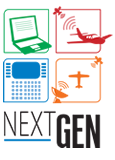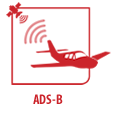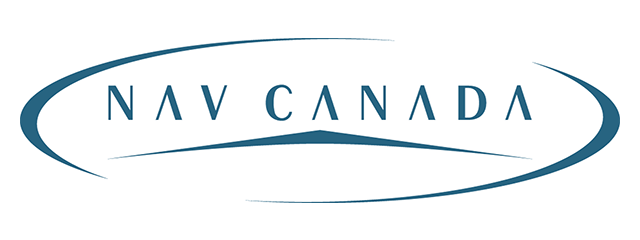- Home
- NextGEN
NextGEN
Your resource for the latest information on NextGEN technology
What is NextGEN?
 The FAA, in collaboration with industry, is deploying NextGen procedures and technology on the ground, in the air, at air traffic control facilities and in the cockpit. So, too, is the agency writing and enacting the policies that govern these advances. These improvements represent a widespread, transformative change in the management and operation of the way we fly. NextGen capitalizes on new and existing technologies, including satellite navigation and digital communications, to enhance safety, reduce delays, save fuel and reduce aviation’s adverse environmental impact.
The FAA, in collaboration with industry, is deploying NextGen procedures and technology on the ground, in the air, at air traffic control facilities and in the cockpit. So, too, is the agency writing and enacting the policies that govern these advances. These improvements represent a widespread, transformative change in the management and operation of the way we fly. NextGen capitalizes on new and existing technologies, including satellite navigation and digital communications, to enhance safety, reduce delays, save fuel and reduce aviation’s adverse environmental impact.
International Harmonization
From the beginning of NextGen, the FAA has placed a high priority on collaborating with other government agencies and international organizations in the development and implementation of air traffic management (ATM) advances worldwide.
Resources
 Find everything you need right here. From the equipment manufacturer’s ADS-B tutorials to international regulations and the latest on NextGen equipment financing, AEA has the resources for informed decision making.
Find everything you need right here. From the equipment manufacturer’s ADS-B tutorials to international regulations and the latest on NextGen equipment financing, AEA has the resources for informed decision making.
Industry Resources
Aspen Avionics:
Garmin:
Southeast Aerospace:
Trig Avionics:
Universal Avionics Systems Corporation:
Government Resources

Airservices Australia & CASA:
Eurocontrol:
Federal Aviation Administration (FAA):
ADS-B Frequently Asked Questions
FAA Major Repair and Alteration Data Job Aid
Already equipped? Find out how your system is performing. Email 9-AWA-AFS-300-ADSB-AvionicsCheck@faa.gov and include your N-number, ADS-B transmitter & GPS make/model numbers to find out.
Nav Canada:
ADS-B
 The FAA has mandated that aircraft flying in most controlled airspace be equipped with ADS-B Out — the ability to broadcast their position to the ADS-B network — by January 1, 2020. ADS-B Out avionics use onboard navigation equipment to derive an aircraft’s position, which is then broadcast for air traffic control services and for use by other aircraft.
The FAA has mandated that aircraft flying in most controlled airspace be equipped with ADS-B Out — the ability to broadcast their position to the ADS-B network — by January 1, 2020. ADS-B Out avionics use onboard navigation equipment to derive an aircraft’s position, which is then broadcast for air traffic control services and for use by other aircraft.
FAA's Approved ADS-B Out Avionics
ADS-B Learning the Ins and Outs, Published in July 2011 in the 2011-12 Pilot's Guide to Avionics
FAA creates RVSM benefit to ADS-B Out early equipage - 01/10/2019
Regulatory Update: ADS-B Out Installations - 08/08/2017
CASA delays ADS-B implementation for certain private aircraft - 11/27/2016
FAA publishes ADS-B policy - 03/04/2016
FAA Publishes ADS-B Guidance - 12/10/2015
CASA responds to AEA concerns over ADS-B mandate - 07/10/2015
ADS-B Out Technical Correction - 02/09/2015
Update on ADS-B Field Approvals - 07/23/2014
CASA Mandate FL290 for ADS-B - 07/29/2013
AirServices Australia Mandates ADS-B Avionics Equipment - 08/29/2012
FAA Proposes a Revision to Advisory Circular 20-172 Airworthiness Approval for ADS-B In Systems and Applications - 02/15/2012
ADS-B Stalls on Takeoff - 10/06/2010
FAA Releases ADS-B Final Rule - 05/27/2010
FAA Finalizes ADS-B Technical Standard Orders - 12/10/2009
Datalink
 Datalink allows some communications to move off the voice channel and provides a verifiable record, reducing communication errors. It also allows increased air traffic efficiency by reducing the time spent on routine tasks, such as communications transfers. The FAA deployed data communications as part of the FANS program in oceanic airspace. Boeing and Airbus developed integrated communication and navigation capabilities (FANS 1 and FANS A, respectively), providing a pilot-contoller datalink and the ability to send surveillance data from the aircraft to the ATC system through Automatic Dependent Surveillance–Contract.
Datalink allows some communications to move off the voice channel and provides a verifiable record, reducing communication errors. It also allows increased air traffic efficiency by reducing the time spent on routine tasks, such as communications transfers. The FAA deployed data communications as part of the FANS program in oceanic airspace. Boeing and Airbus developed integrated communication and navigation capabilities (FANS 1 and FANS A, respectively), providing a pilot-contoller datalink and the ability to send surveillance data from the aircraft to the ATC system through Automatic Dependent Surveillance–Contract.
Controller Pilot Datalink Communications
(CPDLC) is a system that supplements air/ground voice communications. As a result, it expands two-way air traffic control air/ground communications capabilities. Consequently, the air traffic system's operational capacity is increased and any associated air traffic delays become minimized. A related safety benefit is that pilot/controller read-back and hear-back errors will be significantly reduced.
Navigation
 Performance Based Navigation (PBN) delivers new routes and procedures that primarily use satellite-based navigation and on-board aircraft equipment to navigate with greater precision and accuracy and can provide benefits through all phases of flight. It provides a basis for designing and implementing automated flight paths, airspace redesign and obstacle clearance. PBN benefits include shorter, more direct flight paths, improved airport arrival rates, enhanced controller productivity, increased safety due to repeatable, predictable flight paths, fuel savings and a reduction in aviation’s adverse environmental impact. This key element of the Next Generation Air Transportation System (NextGen) provides a framework for defining performance requirements in navigation specifications.
Performance Based Navigation (PBN) delivers new routes and procedures that primarily use satellite-based navigation and on-board aircraft equipment to navigate with greater precision and accuracy and can provide benefits through all phases of flight. It provides a basis for designing and implementing automated flight paths, airspace redesign and obstacle clearance. PBN benefits include shorter, more direct flight paths, improved airport arrival rates, enhanced controller productivity, increased safety due to repeatable, predictable flight paths, fuel savings and a reduction in aviation’s adverse environmental impact. This key element of the Next Generation Air Transportation System (NextGen) provides a framework for defining performance requirements in navigation specifications.
Area Navigation (RNAV)
RNAV is a method of navigation that permits aircraft operation on any desired flight path within the coverage of ground or space−based navigation aids or within the limits of the avionics onboard the aircraft, or a combination of these.
Required Navigation Performance (RNP)
RNP increases the precision of RNAV through computer-based RNAV performance monitoring and alerting aboard the aircraft. This includes flying precise curved paths, giving air traffic controllers more options and enabling them to relieve or eliminate conflicts between approaches to or takeoffs from airports that are located close to each other.
Wide Area Augmentation System/Localizer Performance with Vertical Guidance (WAAS/LPV)
WAAS/LPV provides approaches comparable to those of an Instrument Landing System (ILS) without the need for ILS’s ground infrastructure. The capability improves access to many airports in reduced visibility, with an approach aligned to the runway. Using WAAS, aircraft can access more than 3,000 runway ends in poor weather conditions with minimums as low as 200 feet. WAAS can even get you into places where the Instrument Landing System (ILS) may not be available. There are now twice as many WAAS procedures (LPVs and LPs) as there are ILS glide slopes in the U.S. National Airspace System.
Email Reminders & Updates
- EEDirect
- Regulatory
- Convention
- Regionals
- Wired











